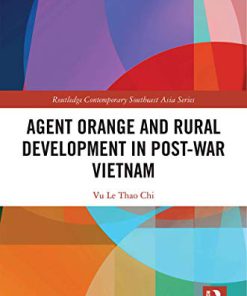Japan and the shaping of post Vietnam War Southeast Asia Japanese diplomacy and the Cambodian conflict 1978 1993 1st Edition by Andrea Pressello 1315514915 9781315514918
$50.00 Original price was: $50.00.$25.00Current price is: $25.00.
Japan and the shaping of post Vietnam War Southeast Asia Japanese diplomacy and the Cambodian conflict 1978 1993 1st Edition Andrea Pressello – Ebook PDF Instant Download/Delivery ISBN(s): 9781315514918, 1315514915

Product details:
• ISBN 10:1315514915
• ISBN 13:9781315514918
• Author: Andrea Pressello
The Vietnamese invasion of Cambodia in 1978 and the consequent outbreak of the Cambodian conflict brought Southeast Asia into instability and deteriorated relations between Vietnam and the subsequently established Vietnam-backed government in Cambodia on the one hand and the Association of Southeast Asian Nations (ASEAN) countries on the other. As a result of the conflict, the Soviet Union established a foothold in Southeast Asia while China, through its support of the anti-Vietnam Cambodian resistance, improved relations with Southeast Asian countries such as Thailand. Japan’s Fukuda Doctrine – it’s declared priorities of promoting cooperative and friendly relations between Communist Indochinese nations and non-Communist ASEAN countries – became increas¬ingly at odds with Japan’s role as a member of the Free World in the broader Cold War confrontation.
Table contents:
1 Southeast Asia in Japan’s postwar foreign policy, 1950s–1960s
2 US “exit” and Japanese “entry”: post-Vietnam War Southeast Asia and the Fukuda Doctrine, 1969–1977
3 The Cambodian conflict and the polarization of Southeast Asia: Japan’s response, 1978–1980
4 New Cold War and Japan’s pursuit of its regional agenda, 1981–1982
5 The unfolding of Japan’s “twin-track” diplomacy in Southeast Asia, 1983–1984
6 Changing Cold War environment and the intensification of Japan’s peace diplomacy, 1985–1988
7 The Cambodian peace process and the shaping of post-Cold War Southe
People also search:
japan and southeast asia
japan southeast asia and the pacific
japan and vietnam war
japan ww2 southeast asia
japan and vietnam
after japan’s victory in the philippines which strategy
You may also like…
Politics & Philosophy - International Relations
Agent Orange and Rural Development in Post war Vietnam 1st Edition Vu Le Thao Chi
Uncategorized
China in India s Post Cold War Engagement with Southeast Asia 1st Edition Chietigj Bajpaee
Society Politics Philosophy International Relations
Earth Sciences
Politics & Philosophy - Government & Politics
Conflict in Ukraine The Unwinding of the Post Cold War Order 1st Edition Rajan Menon Eugene Rumer
Uncategorized
Uncategorized
Shaping Jerusalem Spatial Planning Politics and the Conflict 1st Edition Francesco Chiodelli











